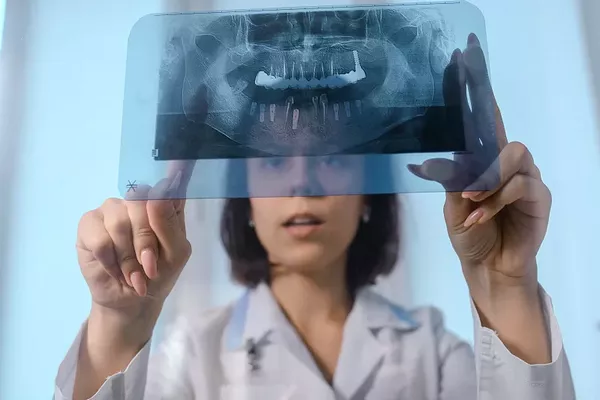Periodontitis, a severe form of gum disease, poses a significant threat to oral health. Characterized by the inflammation of the supporting structures around the teeth, including the gums and bone, periodontitis demands a comprehensive and strategic approach for effective management and healing. In this professional guide, we will explore evidence-based strategies to navigate the complexities of periodontitis and work towards achieving oral health restoration.
1. Understanding Periodontitis: Causes and Progression
To effectively address periodontitis, one must comprehend its causes and progression. Poor oral hygiene leading to the accumulation of plaque and tartar is a primary cause. As the disease progresses, the body’s inflammatory response can result in the destruction of the gum tissue and supporting bone. Recognizing the signs, such as persistent bad breath, gum recession, and tooth mobility, is crucial for timely intervention.
2. Professional Periodontal Evaluation: Foundation for Treatment
The first step in healing periodontitis is a comprehensive periodontal evaluation conducted by a dental professional. This assessment involves measuring the depth of gum pockets, assessing gum recession, and examining X-rays to determine the extent of bone loss. A thorough understanding of the individual’s periodontal condition forms the foundation for an effective treatment plan.
3. Scaling and Root Planing: Deep Cleaning for Gum Health
Scaling and root planing, commonly known as a deep cleaning, is a crucial non-surgical treatment for periodontitis. This procedure involves the removal of plaque and tartar from above and below the gumline, smoothing the root surfaces to prevent further bacterial colonization. It is often performed in quadrants to ensure a thorough and comprehensive cleaning.
4. Antibiotics and Antimicrobial Therapy: Targeting Bacterial Infection
In cases where periodontitis is more advanced, antibiotics or antimicrobial therapy may be prescribed. These medications target and eliminate the bacteria causing the infection, aiding in the reduction of inflammation and facilitating the healing process. The choice of antibiotics and duration of treatment are determined by the severity of the condition.
5. Surgical Interventions: When Advanced Treatment is Necessary
In severe cases of periodontitis, surgical interventions may be necessary to effectively address the damage and promote healing. Procedures such as flap surgery, bone grafts, and guided tissue regeneration aim to repair damaged tissues, reshape the bone, and restore the supportive structures around the teeth.
6. Laser Therapy: Precision in Periodontal Treatment
Laser therapy has emerged as a innovative tool in periodontal treatment. It offers precision in targeting and removing infected tissue while promoting minimal discomfort and faster healing. Laser-assisted procedures can be used in conjunction with traditional treatments to enhance their effectiveness.
7. Orthodontic Evaluation: Aligning for Gum Health
An orthodontic evaluation is crucial in cases where misaligned teeth contribute to periodontitis. Malocclusion can create spaces that are difficult to clean, leading to increased plaque accumulation. Orthodontic interventions, such as braces or aligners, can help align teeth and improve oral hygiene, contributing to the overall success of periodontitis treatment.
8. Systemic Health Considerations: Collaborating with Healthcare Professionals
Periodontitis has been linked to various systemic health conditions, including diabetes and cardiovascular disease. Collaborating with healthcare professionals, such as endocrinologists or cardiologists, is essential for individuals with these conditions. Managing systemic health contributes to overall well-being and aids in periodontitis healing.
9. Home Care Practices: Maintaining Periodontal Health
Effective home care practices are crucial in maintaining periodontal health post-treatment. Individuals with periodontitis should adhere to a rigorous oral hygiene routine, including regular brushing with a soft toothbrush, flossing, and incorporating an antiseptic mouthwash. Consistent home care practices contribute significantly to preventing recurrence.
10. Lifestyle Modifications: Enhancing Oral and Overall Health
Lifestyle factors, including smoking and poor dietary choices, can significantly impact periodontal health. Quitting smoking and adopting a diet rich in vitamins and minerals support the body’s ability to heal and maintain optimal oral health. Lifestyle modifications contribute to the long-term success of periodontitis treatment.
11. Regular Periodontal Maintenance: Preventing Recurrence
After the initial phase of treatment, regular periodontal maintenance appointments are essential. These visits involve professional cleanings and assessments to monitor the condition, prevent recurrence, and make necessary adjustments to the treatment plan. Consistent follow-up care is key to maintaining the results achieved through periodontitis treatment.
Conclusion: Empowering Individuals for Periodontitis Healing
Healing periodontitis is a comprehensive journey that demands a combination of professional interventions, effective home care practices, and lifestyle modifications. By understanding the causes, seeking timely professional evaluation, and actively participating in the treatment process, individuals can navigate the path to periodontal health restoration. Embrace these evidence-based strategies, collaborate closely with your dental and healthcare professionals, and empower yourself to achieve lasting healing and optimal oral health.
Related Topics:
Understanding the Duration of Periodontitis: A Comprehensive Guide
Unveiling the Pace of Periodontitis Progression: A Comprehensive Guide
Can You Have Gingivitis and Periodontitis at the Same Time?





























